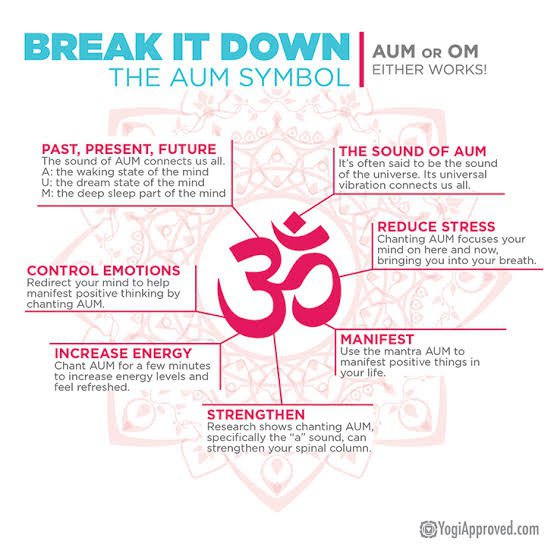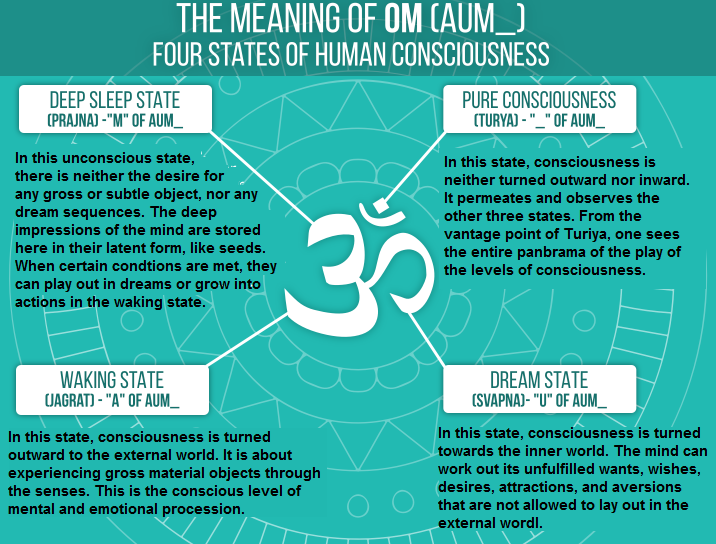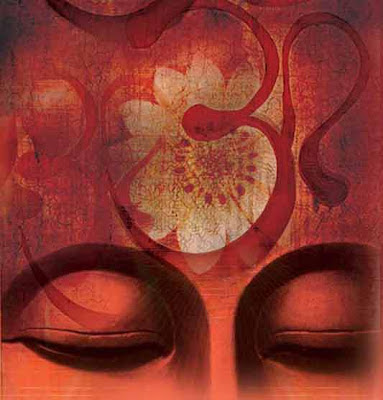Impact of chanting OM on healthy life
 According the most ancient spiritual traditions of India dating back over 25,000 years, Om is the “soundless sound” made by the primordial vibration of the universe, and the basic harmonic building block of our three dimensional world. Many leading edge astrophysicists now agree to this fact. Om is made up of three Sanskrit letters, a, u, and m……..
According the most ancient spiritual traditions of India dating back over 25,000 years, Om is the “soundless sound” made by the primordial vibration of the universe, and the basic harmonic building block of our three dimensional world. Many leading edge astrophysicists now agree to this fact. Om is made up of three Sanskrit letters, a, u, and m……..
By Padam Shree Dr Chandrakant S Pandav
When these sacred seed syllables are combined, they make the sound “Om”. Om is a mantra or non-denominational prayer in itself. Mankind has always understood the importance and benefits of adding audible manifestations of these divine harmonics to enhance our spiritual development. There are many meanings behind this sacred Vedic syllable. Some regard it as a symbolic representation of the core of cosmic energy field. George Feuerstein in “The Yoga Tradition” says the syllable “ú “(Om) is held to be or to express the pulse of the cosmos itself. It was through meditative practice rather than intellectual speculation that the seers and sages of Vedic times arrived at the idea of a universal sound, eternally resounding in the universe, which they ‘saw’ as the very origin of the created world.
Tapping into the Om vibration is fairly easy but reaping its benefits requires time and patience. One may listen to a recording of Om, chant the Om, or even gaze in meditation at the Sanskrit symbol of Om. Over time, the Om will become pervasive, enveloping the aspirant in a warm and gentle knowingness, a calmness of being, and an unmistakable light. It is said in the Vedic texts that one who works with Om develops a sweet voice, a kind nature, and a pleasing disposition. The energy of Om ultimately reminds us of our interconnected-ness to life everywhere, making us more compassionate, loving beings.
 If only more of us chanted Om, what a healthier world this would be. INTRODUCTION Om is the universally accepted symbol of Hinduism. All sections, cults and groups honour this and use this. Even Jainism, Buddhism and Sikhism have adopted this. It is both an auricular and a visual symbol for Brahman, the Absolute of Hindu philosophy, and God of Hindu religion. Literally the word Pranava means that by which God is effectively praised’. It also means that which is ever new’. The word Om is derived from the Sanskrit root ‘ava’ which has nineteen different senses.
If only more of us chanted Om, what a healthier world this would be. INTRODUCTION Om is the universally accepted symbol of Hinduism. All sections, cults and groups honour this and use this. Even Jainism, Buddhism and Sikhism have adopted this. It is both an auricular and a visual symbol for Brahman, the Absolute of Hindu philosophy, and God of Hindu religion. Literally the word Pranava means that by which God is effectively praised’. It also means that which is ever new’. The word Om is derived from the Sanskrit root ‘ava’ which has nineteen different senses.
From these it is possible to construe that Om represents that power which – (1) is omniscient; (2) rules over the entire universe; (3) protects one from the evils of life; (4) fulfils the cherished desires of its devotees and (5) destroys ignorance and gives enlightenment. Pranava has been extolled highly in the Vedas, the Upanishads and the Gitä as also in other scriptures. The Gopathbrahmana of the Atharva Veda relates a story according to which God Indra successfully overcame the demons with the help of Om.
The story can be interpreted to mean that man can conquer his beastly nature by having recourse to the repetition of Om. The Yajurveda exhorts us to try to realize Brahman through repeating and remembering Om. The Kathopanishat declares that Om is Paräbrahman itself. The Mundak Upanishat advises the spiritual aspirant to meditate on the unity of the ätman (the self) with Brahman (God) using Om for japa. Actually Om comprises of three independent letters a, u and m, each of which has its own meaning and significance.

The letter ‘A’ represents beginning (adimatva)• u represents progress (utkarasha);• M represents limit or dissolution (miti).• Hence the word Om represents that power responsible for creation, development and dissolution of this universe, i.e., God Himself. Om represents the Self which is the Supreme Non dual Reality. The Self is known in four states, namely, the waking state, the dream state, the deep-sleep state, and the fourth state called the turiyä. All these states are represented in the three sounds of Om (A, U, M), and the silence that follows and surrounds the syllable. The sound A represents the waking state; the sound U represents the dream state, and the sound M represents the deep sleep state.
The waking state is superimposed on the A sound because it is the first of the three states of consciousness, and so is the sound A the very first of the letters of the alphabet – in all languages. The dream is but a view within the mind of the impressions that had reflected on the surface of the mental lake during the waking state. Besides, the dream state occurs between the waking and the deep-sleep state, and comes second among the three states of consciousness. And so, U, being next to A in order of sounds, and also since it is between A and M, is treated as representing the dream state. On the M sound of Om is superimposed the deep-sleep state.
On this silence is superimposed the idea of the fourth state, known as turiyä. This is the state of Perfect Bliss when the individual Self recognizes the identity with the Supreme. In Om, the sounds A, U, and M are called mantras or forms; there is also in Om the common principle called the Amaträ – Om, that which signifies the thingsin-itself, running through and pervading the threefold phenomena of waking, dream, and deep sleep. The law of memory is that the rememberer and the experience must be one and the same individual, or else memory is impossible. So, as we can remember all our experiences in all three planes, there must necessarily be a single common factor which was a witness of all the happenings in all the three planes.

There must be some entity within ourselves who is present in the waking world, who moves and illuminates the dream, who is a distant observer in the deep sleep world, and yet who is not conditioned by any of these three realms. This entity, conceived as the fourth state (turiyä), is the Real, the Changeless, the Intelligent Principle. The syllable Om symbolizes both the spheres: (1) the phenomenal, visible sphere of the ‘jägrat’, wherein the manifestations of time and space appear and perish, and (2) the transcendent, timeless sphere of the Imperishable Being, which is beyond and yet one with it. Thus, A the ‘waking state’, U, the ‘dream’, and M, the ‘deep sleep’, and the silence, ‘turiyä’, all the four together comprise the totality of this manifestation of Ätman-Brahman as a syllable. Just as the sound M manifests itself, grows, becomes transformed in its vocal quality, and finally subsides into the silence that follows, so to the four ‘states’ or components of being ultimately merge into the homogeneous silence of the ‘fourth’ (turiyä).
The other three states are transformations of the one experience, which taken together constitute the totality of its modes, whether regarded from the microcosmic or from the macrocosmic point of view. The first letter A is the root sound, the key, pronounced without touching any part of the tongue or the palate; M represents the last sound in the series, being produced by closed lips; and the U rolls from the very root to the end of the sounding part of the mouth. Has Om represents the whole phenomenon of soundproducing. As such it must be the natural symbol, the matrix of all the various sounds.

Swami Vivekananda’s thoughts on OM – “This Om is the only possible symbol which covers the whole ground, and there is none other like it. The sphota is the material of all worlds, yet it is not any definite word in its fully formed state. That is to say, if all the particularities which distinguish one word from another be removed, then what remains will be the sphota. Therefore, this sphota is called the Näda-Brahman, the Sound-Brahman, Now, every word symbol intended to express the inexpressible sphota, will so particularise it that it will no longer be the sphota. That which particularize it the least and, at the same time, most approximately expresses its nature will be the truest symbol thereof; and this is the Om, and the Om only; because, these three letters A, U, M, pronounced in combination as Om, can alone be the generalized symbol of all possible sounds. The letter A is the least differentiate of all sounds. Again, all articulate sounds are produced in the space within the mouth – beginning with the root of the tongue and ending at the lips – the throat-sound is A, and M is the lip-sound; and U exactly represents the rolling forward of the impulse which begins at the root of the tongue, continuing till it ends in the lips.”
If properly pronounced, this Om will represent in itself the whole phenomenon of sound production, and no other word can do this; and this, therefore, is the fittest symbol of the sphota, which is the real meaning of the Om. And as the symbol can never be separated from the thing signified, the Om and the sphota are one. And, as the sphota, being the finer side of the manifested universe, is nearer to God, and is indeed the first manifestation of Divine Wisdom, this Om is truly symbolic of God. Om thus represents the entire manifested world and the unmanifest, and also that which lies beyond both the manifest and the unmanifest – the Brahman, which is the changeless substratum for the changing objects of the world of experience. In the Bhagavadgétä, every mantra, Om, the Pranava, is prefixed on. And without ‘Om’ no sacred chant has its power. Just as a living body has no vitality when the life-giving breath is not flowing through its veins, so too, a mantra has no life in it without the addition of the Pranava. Vedäntic students generally practise the repetition of and the mediation upon the symbol provided by the Pranava – this is called the Pranava Upäsanä. OM THE MANTRÄ Om is the original Word of Power, a mantra.
A mantra is a series of verbal sounds whose effect lies not in an assigned intellectual meaning, but in an inherent sound-power that can produce a specific effect, physically or psychologically. The word mantra itself comes from the Sanskrit expression mantra trayate which means “a transforming thought;” literally, “that which when thought carries across”– which produces an objective, perceptible change. It also literally means “a liberating thought.” In the Yoga tradition, Om is the supreme mantra!, the most sacred of holy words. Although it is first found in the spiritual writings of Hinduism, Om is used by Buddhists and Jains in their rituals and meditation, and has also passed over into the Jewish, Christian, and Muslim religions in the form of Amin (Amen), which is intoned at the end of all prayers, and in Christianity is even a title of Christ.
These things saith the Amen, the faithful and true witness, the beginning of the creation of God.” (Revelation 3:14) Tibetan Buddhism particularly emphasizes the power and value of Om. In Chinese Pure Land Buddhism, Amida Buddha is invoked by saying “Omitofo” [Amida Buddha]. One time when I was participating in a Name Recitation (Nienfo) session, during the dharma talk at the close the leader, the Venerable Manpu, explained that in the depths of meditation–and especially at the time of leaving the body–the practitioner passes from “Omitofo” to “Omito” [Amida] and thence to “Om” which is the essence of “Omitofo” and is the force that carries the cultivator into the consciousness that is the Pure Land (Sanskrit). Pure Land Buddhists also bless water by drawing an Om symbol in it. Om is also called: Pranava, Omkära, and Ekäkñhara. Pranava means both lifegiver (infuser of präna) and controller of life force (präna). “That which causes all the pränas to prostrate themselves before and get merged in the Paramätmän, so as to attain identity with Him, is for that reason known as the Pranava.” (Atharvashikha Upanishad 1:10a) OM – THE WORD
This sacred syllable is spelled out either as Om or Aum, but It is usually written in the diagrammatic forms: or It is most important in repeating Om to pronounce the O correctly. It should be pronounced like the long o in the Italian or common American manner–as in home and lone. In England, Canada, and parts of the American South, the long o is sometimes pronounced as a diphthong, like two vowels jammed together: either like “ay-oh” or “eh-oh.” This is not the correct manner of pronouncing the O, which should be a single, pure vowel sound. Om is also considered to be formed of the three letters a, u and m, which represent the three states of waking, dreaming, and dreamless sleep respectively, as well as the physical, astral, and causal levels of existence. In Sanskrit, when a and u are combined they produce the sound of o. However, this only applies to verbal speech. In mental “speaking” we make the pure sound of o, not a and u together. So the inner Om is only two letters, not three. Om is more effective if it is mentally intoned–that is, mentally “sung” on a single note (the pitch does not matter–whatever is spontaneous and natural). This makes the repetition stronger and of deeper effect, because intoning Om unifies the mind and naturally concentrates it.
Om should be intoned giving full value to both the O and the M. That is, Oà should be intoned with equal time on both letters: Oooommmm. Not Oommmmmm or Oooooomm. You need not be overexacting about this, but approximately so. The way to receive the benefit of a mantra is japa, the continual repetitionintonation of the mantra. In this way the invoker is constantly imbued with the power and consciousness inherent in the mantra.
(The author is recipient of Padma Shree and Former Professor and Head of Department of Community Medicine and Public Health, AIIMS, New Delhi)

